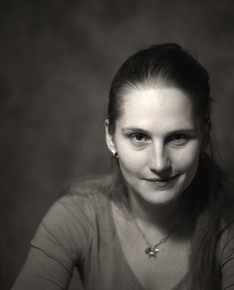Search results for "2010/02/let-us-eat-cake"
In the beginning was… DNA?
8 October 2010 | Reviews

Adam and Eve, or the elephants: Osmo Rauhala’s sketch of The Fall of Man. As the bull eats the apple, evil rises from the ground in the form of a plant with eyes: a ‘misbreed’, a cross of two species alien to each other
Kuutti Lavonen – Osmo Rauhala – Pirjo Silveri
Tyrvään Pyhän Olavin kirkko – sata ja yksi kuvaa /
St Olaf’s Church in Tyrvää – One Hundred and One Paintings
Toim. / Edited by Pirjo Silveri
Translations: Silja Kudel, Jüri Kokkonen
Helsinki: Kirjapaja, 2010. 143 p., ill.
ISBN 978-952-247-103-1
€44.30, hardback
The old shingle roof of the early 16th-century stone church of St Olaf in Tyrvää, in the province of Pirkanmaa, southern Finland, was repaired by village volunteers in 1997. Three weeks after they completed their work, a drunken arsonist set the church on fire. More…
Utopia or cacotopia?
19 August 2011 | Extracts, Non-fiction
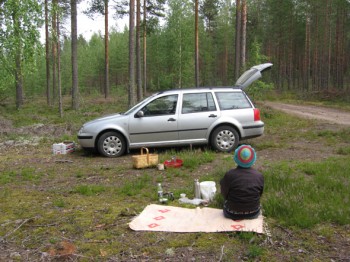
Viljakansaari, Finland, 2008. ©Merja Salo
Do we live in the age of autopia, and if we do, what does that mean? On this earth there are now perhaps 800 million cars, all vital to our modern lifestyles. Professor and photographer Merja Salo observes landscapes through her camera with this question in mind
Extracts and photographs from Carscapes. Automaisemia (Edition Patrick Frey & Musta Taide, 2011. Translation: Laura Mänki)
The car may be the vehicle for the everyman, but not every man is a good driver. According to Hungarian- born psychoanalyst Michael Balint, good drivers have the psychological structure of philobats. With their sense of sight, they perceive space well and control it by steering their vehicle skilfully. Ocnophiles, on the other hand, are more at home as passengers. They structure the world through intimacy and touch. When driving, they cling anxiously to the steering wheel and do not perceive the continously changing situations in traffic.
‘The Lion of the North’ wins the non-fiction Finlandia Prize
25 November 2014 | In the news
The Finlandia Prize for Non-Fiction 2014, worth €30,000 and awarded by Suomen Kirjasäätiö (The Finnish Book Foundation), went to the historian and author Mirkka Lappalainen on 19 November for her book on a 17th-century Swedish king.
Finlandia Prize for Non-Fiction 2014, worth €30,000 and awarded by Suomen Kirjasäätiö (The Finnish Book Foundation), went to the historian and author Mirkka Lappalainen on 19 November for her book on a 17th-century Swedish king.
The winning entry, entitled Pohjolan leijona, Kustaa II Adolf ja Suomi 1611–1632 (‘The Lion of the North. Gustavus II Adolphus and Finland 1611–1632’, Siltala), was chosen by from a shortlist of six finalists by Heikki Hellman, journalist and Dean of the School of Communication, Media and Theatre in Tampere. According to him, ‘Pohjolan leijona is an exceptionally well-written narrative for a non-fiction book; the author uses both earlier literature and numerous primary and secondary sources with great skill. Lappalainen succeeds in demonstrating how, during the reign of Gustavus II Adolphus, both Sweden and its easterly province, Finland, began to develop an organised society with its structure of officials and bureaucracy, how jurisdiction replaced the arbitrary rule of the aristocracy and how it was only then that Finland developed its role as part of Sweden. Pohjolan leijona sweeps the reader along and helps us to understand where we have come from and who we are.’
Hellman also commented on the growing practice of publishing non-fiction texts in English only: ‘Research is not done only for other scholars; it must also be relevant to people’s lives and be brought to their attention. We must also publish in our mother tongue, or else it will not survive as a language for research. This is one of the reasons why non-fiction is so necessary.’
Mirkka Lappalainen has received other prizes for her work. Susimessu (‘Wolf mass’), for example, was voted History Book of the year in 2010.
Riitta Jalonen & Kristiina Louhi: Aatos ja Sofia [Aatos and Sofia]
28 January 2011 | Mini reviews, Reviews
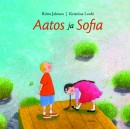 Aatos ja Sofia
Aatos ja Sofia
[Aatos and Sofia]
Kuvitus [ill. by]: Kristiina Louhi
Helsinki: Tammi, 2010. 36 p.
ISBN 978-951-31-5240-6
€14.30, hardback
Riitta Jalonen (born 1954) writes books for children and adults with the same emotional intensity. This picture book throws readers in alongside two children, Aatos and Sofia, to play in a sandpit. Aatos (or ‘Thought’, in Finnish) is a bit of a dreamer, while Sofia, who is slightly older, takes a more practical approach to life. As in her Tyttö (‘Girl’) trilogy, Riitta Jalonen uses an impressionistic mode of storytelling. Through a selection of brief, random scenes, Aatos ja Sofia tells the deeply personal story of a little boy’s fondness for his playmate. Kristiina Louhi’s bold, broad-brush illustrations have an almost hypnotic effect on the reader.
Translated by Ruth Urbom
Kirjallinen kulttuuri keskiajan Suomessa [Literary culture in medieval Finland]
1 June 2011 | Mini reviews, Reviews
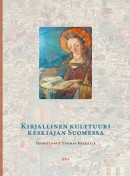 Kirjallinen kulttuuri keskiajan Suomessa
Kirjallinen kulttuuri keskiajan Suomessa
[Literary culture in medieval Finland]
Toim. [Ed. by] Tuomas Heikkilä
Helsinki: Finnish Literature Society, 2010. 480 p., ill.
ISBN 978-952-212-223-7
€ 36, hardback
The literary material from Finland’s medieval period is both more extensive and more interesting than previously thought. A team of scholars has gone through almost all of the material that survives, from the eleventh to the sixteenth century: missals, merchants’ correspondence, vernacular writings and state papers. Literary culture arrived in Finland with Christianity. During the Middle Ages the language of theologians and scholars on Finnish territory was Latin, the principal language of trade was Low German, and affairs of state were conducted in Swedish. This book examines how, when and where the texts were written and what their distribution says about Finnish literary tastes of earliest times. The scholars have done detective work, tracing and connecting parchment missals which ended up as the bindings of bailiffs’ ledgers. The book takes as its main source the National Library’s Fragmenta Membranea, one of the world’s largest collections of medieval parchment fragments. It is planned to digitise the collection and make the fragments freely accessible to both scholars and the general public.
Translated by David McDuff
Peter von Bagh: Sodankylä ikuisesti [Sodankylä forever]
11 June 2010 | Mini reviews, Reviews
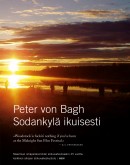 Sodankylä ikuisesti
Sodankylä ikuisesti
[Sodankylä forever]
Helsinki: WSOY, 2010. 308 p., ill.
ISBN 978-951-0-36290-7
€ 52, hardback
The Midnight Sun Film Festival is the world’s northernmost film festival. Held in Sodankylä, Lapland, it is now 25 years old. This scrapbook includes the text of speeches given by filmmakers as well as a wealth of material about the films shown over the years. Much of this material is based on the morning discussion panels which the festival’s director, film historian and author Peter von Bagh, has chaired with his guests. More than one hundred film directors, from Samuel Fuller to Wim Wenders, talk about the background and influences in their work. Von Bagh has constructed dialogues between directors who did not actually attend the same sessions; he calls these conversations – sometimes between the living and the dead – ‘heavenly dialogues’. The Festival was founded by Finnish film directors Aki and Mika Kaurismäki and Anssi Mänttäri in collaboration with the municipality of Sodankylä. The light summer nights and laid-back atmosphere at the festival delight the speakers and audience members every year. In the words of the American filmmaker D.A. Pennebaker, ‘Woodstock is fuckin’ nothing if you’ve been at the Midnight Sun Film Festival.’
What was Finland reading this summer?
2 September 2010 | In the news
 Novels, thrillers and comics were on the June–July list of best-selling books according to the Booksellers’ Association of Finland.
Novels, thrillers and comics were on the June–July list of best-selling books according to the Booksellers’ Association of Finland.
And, as the popular poet, MP, novelist and television celebrity Tommy Tabermann (born 1947) died in June, his collected poems, Runot 1970–2010 became number one of the list.
Sofi Oksanen’s highly popular novel Puhdistus (Purge) has kept itself on the list for a long time, was now at number three. Tuomas Kyrö’s humorous novel about a man in his 80s, Mielensäpahoittaja (‘Taking offense’) was at number seven, Pertti Jarla’s Fingerpori 3 at number eight and Leena Lander’s new novel Liekin lapset (‘Children of the flames’) at number ten.
The top ten list of translated fiction included works by Jo Nesbø, Charlaine Harris, John Irving, Donna Leon and Dagsson Hugleikur.
During the summer there’s clearly enough time for nature observations: The Cloudspotter’s Guide by Gavin Pretor-Pinney, a work presenting birds’ sounds and a book on bugs and creepy crawlies were among the ten best-selling non-fiction books.
Kirjoituksia sankaruudesta [Writings on heroism]
25 March 2011 | Mini reviews, Reviews
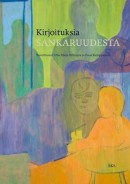 Kirjoituksia sankaruudesta
Kirjoituksia sankaruudesta
[Writings on heroism]
Toim. [Ed. by] Ulla-Maija Peltonen & Ilona Kemppainen
Helsinki: Suomalaisen Kirjallisuuden Seura, 2010. 330 p., ill.
ISBN 978-952-222-207-7
€ 29, paperback
This book examines Finnish heroism and anti-heroism by using approaches from folklore studies, history and literary theory. Political ‘heroism’ manufactured by the media is explored through a study of in-depth personal portraits of Finnish politicians published in the country’s biggest newspaper, Helsingin Sanomat, between 1981 and 2005. According to the research material, a positive impression is made by a narrative about a politician who is an independent thinker even in the context of his own party, from an ordinary home, engaged in manual work in his youth and risen to success overcoming setbacks through his own merits and without intrigue. The story of the European Union’s Commissioner for Economic and Monetary Affairs, Olli Rehn, is a heroic story about a politician who dares believe in a European Finland even when it was disadvantageous to his career. Since the 1990s, writers have begun to take a renewed interest in war heroism; the climate in the 1960s and 1970s was pacifist, but now the ‘Winter War spirit’, which is deemed heroic, has been surfacing in an ever-increasing variety of situations, including economic crises.
Translated by Ruth Urbom
Our favourite things
29 January 2010 | Letter from the Editors
Every reader has his or her favourite book. It is possible to define, with acceptable criteria, when a work of fiction is ‘a good novel’: do the plot, characterisation and language work, does it have anything to say? But when is a ‘good’ novel better than another ‘good’ novel? More…
Panu Rajala: Lasinkirkas, hullunrohkea [Glass-clear, daredevil]
20 May 2010 | Mini reviews, Reviews
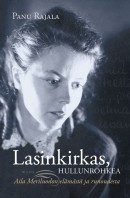 Lasinkirkas, hullunrohkea. Aila Meriluodon elämästä ja runoudesta
Lasinkirkas, hullunrohkea. Aila Meriluodon elämästä ja runoudesta
[Glass-clear, daredevil]
Helsinki: WSOY, 2010. 417 p., ill.
ISBN 978-951-0-35488-9
€39, hardback
Aila Meriluoto (born 1924) is a poet, author and translator whose first collection of poems, entitled Lasimaalaus (‘Stained glass’), sold more than 25,000 copies in 1946. She became a celebrity of her time, as her young, fresh voice expressed post-symbolist visions and, after the long, cruel years of the war, spoke defiantly about the death of God. Hailed as a youthful prodigy, she was favoured by the dominant poet and professor of literature, V.A. Koskenniemi. Meriluoto has published ten collections of poems, as well as novels, children’s books, diaries, memoirs, and a book about her first husband, the poet and author Lauri Viita (1916–1965). She has translated works by Rainer Maria Rilke, Harry Martinson and Astrid Lindgren. This biography tends to concentrate on the writer’s personal history rather than on her works. The author and scholar Panu Rajala and Meriluoto became acquainted in the 1970s, and he calls his biography ‘a subjective testimonial’. Rajala has written plays, novels and film scripts as well as biographies, among them one of the classic author Mika Waltari (1908–1979).
Garden graft
2 September 2010 | Essays, Non-fiction
A chapter from Vapaasti versoo. Rönsyjä puutarhasta (‘Freely sprouting. Runners from the garden’, Kirjapaja, 2010)
If you sit in your garden and feel a bit like you’re tucked uncomfortably at the end of the dock in a guest berth, the reason is this: the garden hasn’t yet found a place in your muscle memory. Because it is only at the point when the garden has settled into your muscle memory, into your senses in as many ways as possible, that it will feel like your own. And that, of course, takes working in the garden, not just sitting in it.
So you should know your rose – not just its lovely smell but also the memory that you get from the shovel handle of when you planted it, or even the memory of the prick of its thorn on your finger. You can anchor every little detail in your senses, and it doesn’t even take much imagination. The scent of thyme on your fingertips, the downy fluff of a pasque flower against your palm, the silken glow of a peony opening in the morning sunlight – or the sumptuous mist of the wee hours of a summer morning twining over everything, and the rare experience of wading through it. More…
What Finland read in March
13 April 2012 | In the news
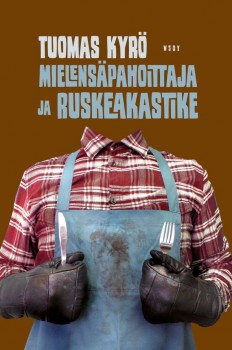
Tuomas Kyrö: ‘Taking offense’, part two
The top of the March list of best-selling fiction titles in Finland, compiled by the Finnish Booksellers’ Association, was Katja Kettu’s love story set in 1940s Finland at war, Kätilö (‘The midwife’, WSOY; see our feature).
Tuomas Kyrö (born 1974) featured twice on the list: Mielensäpahoittaja (‘Taking offense’, WSOY, 2010) was number two and the newly-published sequel, Mielensäpahoittaja ja ruskeakastike (‘Taking offense: the brown sauce’, 2012) had shot up to sixth place.
The title is actually a noun: ‘He who takes offence’: this person is an 80-something man who lives in the countryside and opposes most of what a contemporary lifestyle has to offer.
In the sequel, as his wife has to stay in a nursing home, ‘He who takes offence’ decides to learn how to cook for himself. He dismisses the ‘no-good’ girl who bring him food dailysent by a local agency. A firm believer in the potato, this no-nonsense character continues to fascinate lots of readers.
Rosa Liksom’s Finlandia Prize -winning novel set in the Soviet Union in the 1980s, Hytti nro 6 (‘Compartment number 6’, WSOY) occupied fourth place, a new novel about family life by Eve Hietamies, Tarhapäivä (‘Kindergarten day’, Otava) was number three.
The non-fiction list was topped by a new cookbook by Sikke Sumari, Sikke – ruokaa rakkaudella Toskanassa (‘Sikke – food with love in Tuscany’, Paasilinna). As books about birds featured on the list, one might assume spring is on the way, at last.
Funny ha ha?
3 March 2010 | This 'n' that
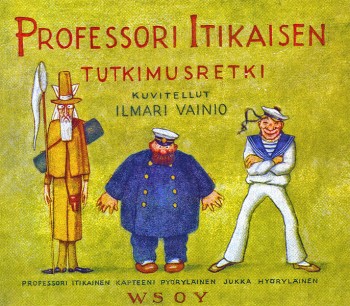 Comic books, graphic novels: the popularity of stories in pictures keeps on growing everywhere – and they may or not may be ‘comical’.
Comic books, graphic novels: the popularity of stories in pictures keeps on growing everywhere – and they may or not may be ‘comical’.
In Finland, sarjakuva (lit. serial picture) will celebrate its 100th anniversary in 2011. The first Finnish picture story, Professori Itikaisen tutkimusretki (‘Professor Itikainen’s expedition’, WSOY), by Ilmari Vainio, was published in 1911.
Ilmari Vainio (1892–1955) was a customs official who later also published two fairy tales and two handbooks for boy scouts. Professor Itikainen is a scientist who sets out on the sea and then finds himself, together with two brave seamen, facing various dangers in Africa, China and on the North Pole. A happy ending ensues in the form of safe arrival back in Helsinki on page 48. More…
Profession: author
10 December 2010 | In the news
Alexandra Salmela, 30, won the Helsinki newspaper Helsingin Sanomat Literature Prize 2010 for best first work, worth €15,000.
Her novel 27 eli kuolema tekee taiteilijan (’27 or death makes one an artist’, Teos) depicts a young woman’s search for her own place and calling in the world. Angie leaves her city of study, Prague, for a small Finnish village, wishing to become an author. Among the narrators are also a soft piggy toy, a cat and a car.
With degrees from both the Theatre Academy of Bratislava and Charles University of Prague, the Slovak-born Salmela majored in Finnish and Finnish literature. She has lived in Tampere, Finland for the past four years. In her opinion Finns should scrap the myth about their difficult language.
The jury chose the winner from 80 debut works, finding Salmela’s novel highly original in its imaginative narrative techniques and language.
Vieraita työssä. Työelämän etnistyvä eriarvoisuus [Foreign workforce. Increasingly ethnic inequality in working life]
21 January 2011 | Mini reviews, Reviews
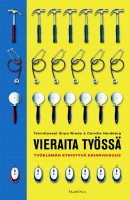 Vieraita työssä. Työelämän etnistyvä eriarvoisuus
Vieraita työssä. Työelämän etnistyvä eriarvoisuus
[Foreign workforce. Increasingly ethnic inequality in working life]
Toim. [Editors]: Sirpa Wrede & Camilla Nordberg
Helsinki: Gaudeamus, 2010. 285 p.
ISBN 978-951-570-776-5
€20, paperback
There has been a great deal of discussion in Finland about whether educated people should be recruited from abroad for high-level positions, and whether immigrants with lower levels of education could redress the labour shortage in low-paid fields. In this collection of twelve scholarly articles, sociologists have situated immigrants into the field of research into the workplace. This book seeks answers to questions about the factors that hamper immigrants’ acceptance into Finnish society and how ethnic otherness is determined in public discourse by those in positions of power within society. The fields of work investigated include health care, food service, building trades and highly skilled immigrants. Immigrants’ perception of discrimination in hiring is addressed in an article by Pakistani-born Akhlaq Ahmad, based on his PhD thesis. Ahmad himself replied to 400 job advertisements and compared his progress in the recruitment process to the experiences of a Finnish test subject with similar educational qualifications. He received a favourable response rate of 1.5 percent, compared to 25% for the Finnish control. This book also considers media images of immigrants and traditional ethnic hierarchies in the workplace.

